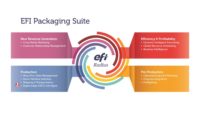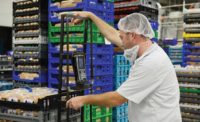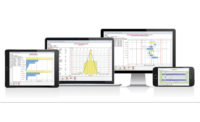Like all manufacturers, bakers and snack producers know that their success (and profitability) depends on more than just regularly introducing new products. Controlling overhead, operating and equipment costs is a major part of the equation.
Food manufacturers of perishables also have to deal with issues such as quality control, sanitation, production scheduling, shipping and distribution, all of which can be challenging, if not handled effectively and efficiently. Therefore, a growing number of bakers and snack producers are investing in logistics technology to address current and future needs in these areas.
“Based on what we’ve learned from our food-processing customers, quality control and regulatory reporting are big concerns,” says Stephanie Eaves, marketing communications specialist at Deacom Inc., Wayne, Pa. “Maintaining fresh ingredients, monitoring expiration dates and being able to test raw materials that come in—and those that have been sitting in storage—are all major issues that food manufacturers need to address on a daily basis.
“Forecasting costs is also a big concern,” she says. The market fluctuates, and it’s important to be able to react to price changes, to be able to adjust price to stay competitive and to maintain market share. The ability to calculate the cost of the final product based on the price of each ingredient and the amount used is something food manufacturers need to be able to operate efficiently.”
Deacom’s Enterprise Resource Planning (ERP) software system, configured specifically for midsize to large batch process manufacturing companies, offers food producers software solutions to address a variety of issues: Quality control, including managing expiration dates for raw materials and manufactured products; inventory management, including lot control and traceability; warehouse management, including real-time transaction posting, pick-and-stage inventory for production jobs and paperless inventory counts; and production, including material resource planning and job scheduling.
Deacom’s Version 14.3, introduced in March, features upgrades to every area of the system, according to the company, with the inventory management and quality control functions having the most substantial enhancements. Improvements include the addition of a global unit-of-measure table, a master production calendar for job scheduling, new lot location capabilities, master lots and container tracking for license plating.
Deacom also released two new supporting tools for its ERP software system in March: A User Acceptance Test Script and the Deacom Help System. The former helps customers test critical business functionalities in all new Deacom build releases. The latter is a web-based help system that provides supporting documents on the main Deacom application, the warehouse management system and the Deacom API library, and features real-time updating.
Shipping and distribution
Two other areas in the bakery industry that have “significant opportunity for improvement, both from an efficiency and accuracy point of view” are shipping and distribution, says Marc Braun, president of Pcdata Inc. East Granby, Conn.
“Because of the dynamic nature of baking distribution, the general assumption is that human creativity and input are needed to deal with the daily exceptions [because] no technology solution can deal with all the challenges a bakery deals with day in and day out,” he says. “The fact is, however, that Pcdata’s Put-to-Light shipping management solution is not only much faster than most paper-based solutions—labor savings of 30% or more are common—it also is much more accurate in fulfilling orders. More accurate order fulfillment translates into happier customers and better sales results.”
Developed specifically for wholesale bakeries, Pcdata’s Put-to-Light paperless dispatch system captures the data needed to assemble, load and ship each order and displays this information on light-emitting diode (LED) displays installed above the area assigned to a specific customer.
“It starts at the production line where, with one key stroke, we register exactly how much of what product has been produced,” he explains. “As the product flows through the warehouse using our Put-to-Light solution, the Pcdata system tracks who gets what amount of product and who actually dispatched the product in
the warehouse.
“When an order or a stack gets completed, it is tagged. The system knows how much product and how much material handling equipment (MHE) are in each stack and order,” Braun continues. “Pcdata’s Dockmanager solution scans the tag automatically, as the stack is rolled onto the truck. The operation now has positive proof the product left the facility on the right truck going to the right customer, and without any impact on labor, as the tag is scanned automatically through a broad range scanner mounted to the side of the loading door. When the truck is full, Dockmanager generates an accurate load manifest of what was loaded.
“The driver takes the load manifest and a handheld computer with Pcdata’s Proof of Delivery application on it on the delivery route. At each drop point, the location is scanned. Next, the load manifest is scanned, so the system knows which stacks should be unloaded at the site. Each stack is scanned as it is unloaded. The driver can’t close out the transaction until all stacks that should have been dropped are scanned off the truck,” Braun explains.
ToolBox Software North America Inc., St. Paul, Minn., meanwhile, develops manufacturing and intralogistics systems exclusively for the baking industry. “Our flagship is the [dispoTool] system for paperless dispatching, which is used for quick and trouble-free order picking,” says Ralf Ulmer, president of U.S. operations.
Last year, the company added two tools to its dispoTool production management system in response to customer requests: a visualization tool and a sanitation management and extended quality control tool. The former uses stainless-steel, touchscreen personal computers or plasma television screens to show the progress of a production step or actual batches. The screens can be used interactively or as displays.
Due to a steady increase in customer demand for extended quality control and sanitation management, ToolBox also added these functions to its dispoTool production-management system. “Each job can be combined with one or various functions of quality control,” explains Ulmer. “For example, product weight, dough temperature or visual inspection can be added to any production step. The user cannot move on with the process without handling the system request.
The system handles sanitation jobs like it does production orders. “They are related to certain items produced or time routines, for example,” he explains. Orders for sanitation jobs can be created manually by the user or automatically by the system.
MHE management
“One of the hottest topics in the bakery industry today is finding ways to reduce the leakage of the MHE,” says Braun. “There are literally millions of dollars being lost every year in MHE.”
One reason for most MHE loss is driver failure to pick up empty racks, trays, baskets and other MHE when dropping off new orders. Drivers often forget to pick up equipment because they’re in a hurry or the customer has stored the MHE in an out-of-the-way place.
Pcdata’s MHE Manager, which runs on the same hand-held computer as the Proof of Delivery application, enables bakeries to track outgoing product and MHE. “When a driver has a full stack, he knows how much that means in terms of trays, baskets and so on,” says Braun. “When he drops off an order and has a Proof of Delivery hand-held module, he can scan product as he removes it from the truck and know how much MHE the customer has. The driver then puts the empties on the truck and enters that number into the hand-held unit. Over time, you can see how much MHE you’re losing at a particular drop point, which is a great starting point for seeing where you’re losing the majority of your MHE.”
Fleet management
Fleet management is another area in which bakers and snack producers typically look for ways to cut costs or better monitor them, especially when gas prices start to climb.
“[Fuel costs] have been a big focus of our customers from the very beginning,” says Sean McCormick, product manager for Telogis Fleet and Telogis Progression at Aliso Viejo, Calif.-based Telogis. “High idle time, excessive speeding—these are all contributors to wasting gas. Obviously, customers become more sensitive [to these problems] as gas prices go up. We provide tools to not only view vehicles that are idling, but to manage the behavior of drivers, through either a dashboard or report, depending on fleet size.”
Telogis Fleet and Telogis Progression, whose customers range from five-vehicle to 50,000-vehicle companies in a variety of industries, including food and beverage, offers three applications: Telogis Fleet 9, a web-based fleet management solution; Telogis Progession, a work-order management platform; and Telogis Route 3.0, a route-optimization program.
Telogis Fleet 9, the latest Fleet version, builds on the application’s existing platform, which lets users manage idle time and speeding, and view and report on diagnostics. “The focus for Fleet 9 was to allow customers to customize their interface, change the layout, add data, change terminology, run customized reports specific to their day-to-day operations and really put the power in their hands to make it look and feel more and more like their company’s interface.”
Telogis Route 3.0, a new version of the company’s Software-as-a-Service (SaaS) multivehicle route-optimization application, was released in 2011. It allows users to track costs for created routes based on fixed and variable costs, fuel costs, labor costs and other variables.
Telogis Progression, another SaaS released by the company last year, is a work order management platform that offers real-time job creation, tracking, routing, dispatching, customer service notifications, route compliance reporting and more.
According to McCormick, the Telogis platform is intended to be used by all organization levels. “It’s not for the supervisor level or managerial level,” he says. “It’s really a tool that can provide value to individual drivers, the managerial layer, as well as the executive layer. In addition, it’s intended to work across different functional organizations, not just an operations group. A safety organization can also benefit from it. It’s really intended to be used up and down an organization, as well as across different functional groups.
Industry-specific solutions
Baltimore-based Roadnet Technologies also offers several route-planning software systems: Territory Planner, which enables optimizing route sequencing, add new customers without adding trucks, reconfigure territories and routes for seasonal changes, determine cost per stop and more; Roadnet Telematics, combines GPS-based, onboard monitoring technology and engine diagnostics with easy-to-use mapping and reporting software; and MobileCast, which enables users to see their routes in real time with GPS tracking.
Mission Foods, an Irving, Texas-based manufacturer and distributor of tortillas, taco shells and salsas, announced in April that it has integrated Roadnet Technologies’ software into its delivery protocols to enable it to design and execute the most optimum routes for its fleet of 50 company-owned trucks.
“We have an excellent team of drivers, but were uncomfortable with the growing expenses associated with overtime pay,” Julianna McCullough, project manager for Mission Foods explains in a press release. “We attribute a portion of this overtime to the diligence of our drivers to complete their daily deliveries, without the benefit of using the most efficient route patterns. In some instances, we believe our drivers tend to invest more time in their deliveries then they need to. No matter the mechanism, at the end of the month, we were looking to reduce this expense.”
Better routes, of course, can result in fewer daily miles per driver, reduced fuel consumption and less vehicle wear and tear—all of which can translate into lower overall transportation costs for
the company.
Bakers and snack makers deal with numerous challenges when developing, producing and delivering their products. Fortunately, today’s software applications can offer industry-specific solutions for many of these issues, making bakers’ and snack producers’ jobs easier and their companies more profitable.







